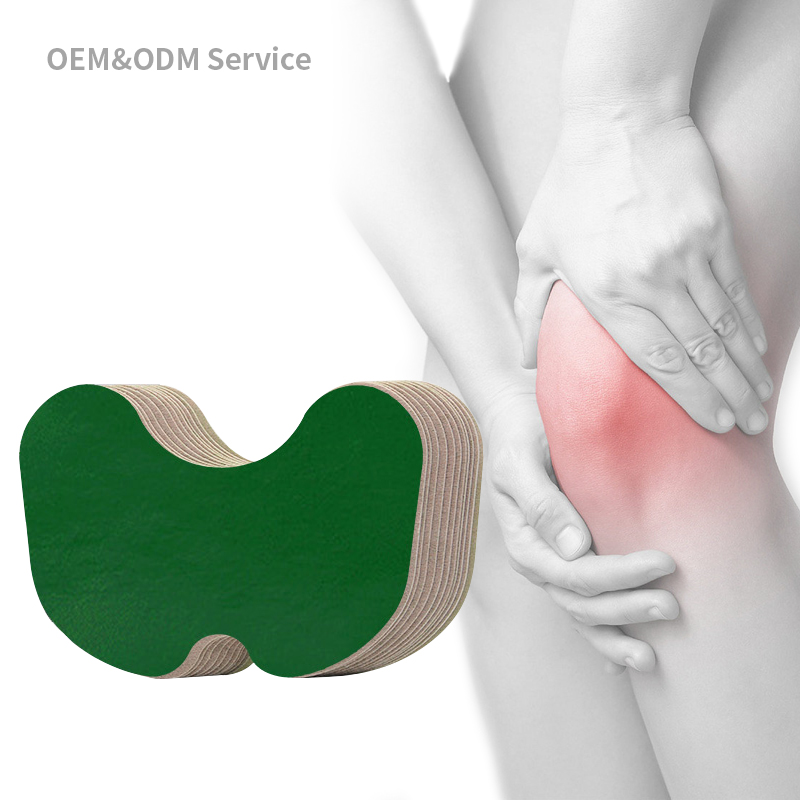What Materials are Typically Used in OEM Knee Pain Relief Patches?
What Materials are Typically Used in OEM Knee Pain Relief Patches?
In the realm of knee pain relief, OEM (Original Equipment Manufacturer) patches have become increasingly popular due to their customizability and ability to meet specific needs. Understanding the materials typically used in these patches is crucial for both manufacturers and consumers alike. This article will delve into the common materials employed in OEM knee pain relief patches, their properties, and why they are chosen.
Common Materials Used in OEM Knee Pain Relief Patches
- Adhesive Backing
The adhesive backing is the component that adheres the patch to the skin. It needs to be strong enough to stay in place, yet gentle enough to not irritate the skin. Common adhesives used are acrylic, silicone, and rubber-based adhesives. These adhesives are chosen for their ability to maintain a secure bond, even with moisture or movement, while still being breathable and comfortable.
- Fabric Layers
The fabric layers provide structure and support to the patch. They can be made from a variety of materials, including cotton, polyester, nylon, and polyurethane. The choice of fabric depends on factors like breathability, flexibility, durability, and comfort. Cotton, for instance, is often chosen for its breathability and softness, while polyurethane is used for its durability and water-resistant properties.
- Active Ingredients
The active ingredients in knee pain relief patches are what provide the therapeutic benefits. These can include herbal extracts, essential oils, menthol, capsaicin, and other compounds. The specific ingredients used depend on the desired effect, such as pain relief, inflammation reduction, or improved circulation. Manufacturers may also include penetrants to help the active ingredients absorb into the skin more effectively.
- Protective Layers
Protective layers, such as films or membranes, are often used to cover the active ingredients and keep them from coming into direct contact with the skin. This helps prevent irritation and ensure a controlled release of the ingredients. These layers can be made from materials like polyethylene, polypropylene, or polyvinyl chloride.
Why These Materials Are Chosen
The materials chosen for OEM knee pain relief patches are carefully selected based on their properties and how they contribute to the overall effectiveness and comfort of the patch. The adhesive backing needs to be strong yet gentle to ensure it stays in place without causing irritation. The fabric layers provide structure and support while also contributing to breathability and flexibility. The active ingredients are chosen based on their therapeutic benefits, while the protective layers help ensure a controlled release and prevent irritation.
Customization Considerations
OEM knee pain relief patches offer the advantage of customization, allowing manufacturers to tailor the patch to an individual's specific needs. This includes choosing the right materials based on factors like skin sensitivity, activity level, and desired therapeutic effects. For example, someone with sensitive skin may require a patch with a hypoallergenic adhesive and soft fabric layers. An athlete may need a more breathable and flexible patch that can keep up with their active lifestyle.
Questions to Consider
- What are the key properties I should look for in an adhesive backing for a knee pain relief patch?
- How do I determine the best fabric layers for my OEM knee pain relief patch based on factors like breathability and comfort?
- What active ingredients are commonly used in knee pain relief patches, and how do they work?
- How do protective layers contribute to the overall effectiveness and comfort of a knee pain relief patch?
- How can I customize my OEM knee pain relief patch to meet my specific needs and preferences?






